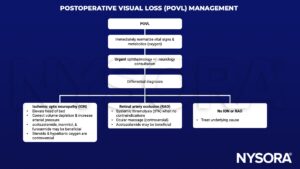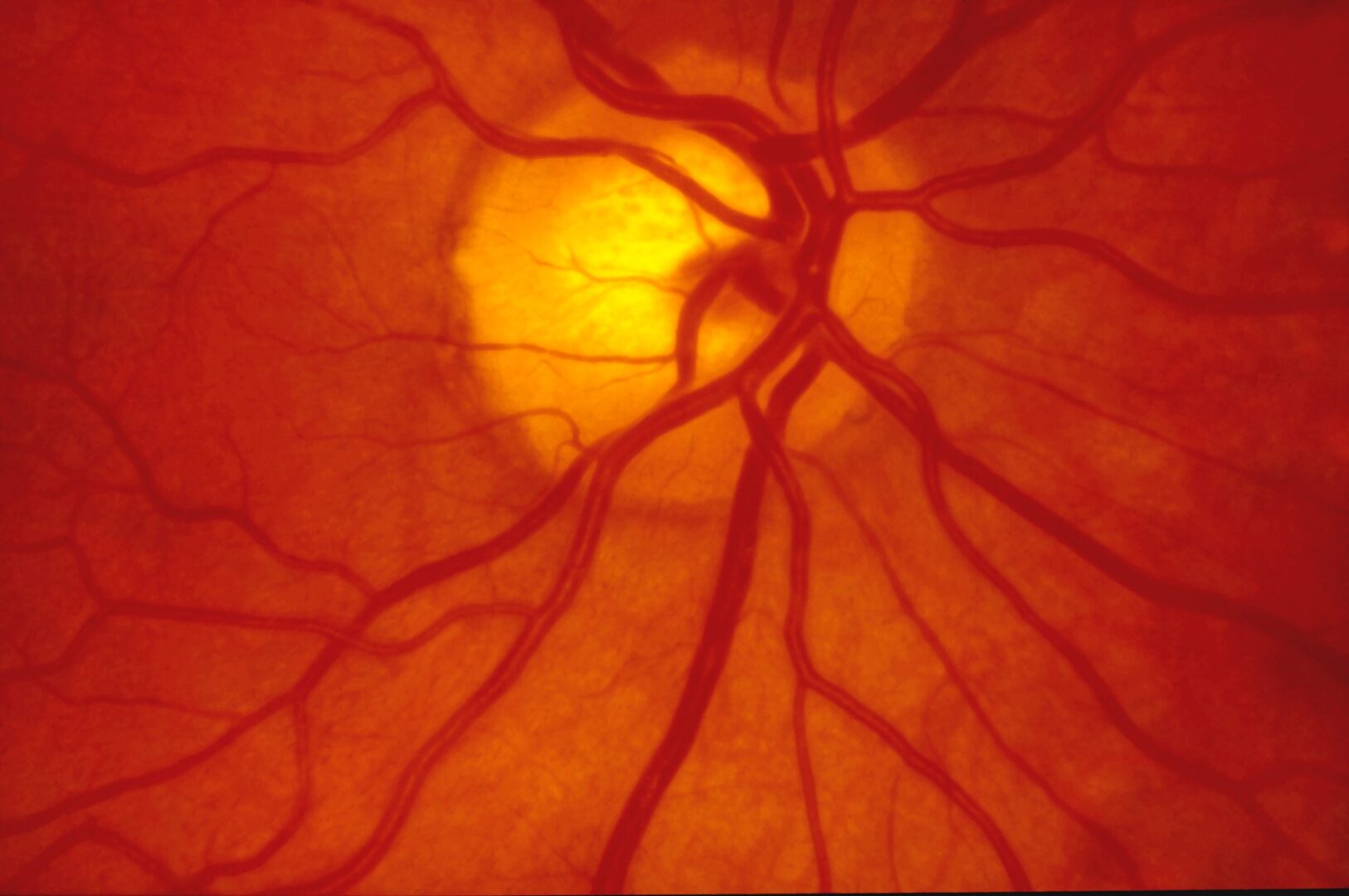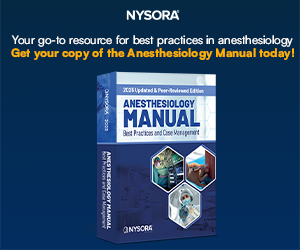Learning objectives
- Describe the symptoms & risk factors of POVL
- Prevent POVL
- Manage POVL
Definition & mechanisms
- Postoperative visual loss (POVL) is an uncommon complication primarily associated with cardiac, spine, and head and neck surgery that can have a potentially severe impact on quality of life
- Most cases of POVL occur after spinal surgery and while there are many different etiologies, pressure on the eye due to improper head positioning is a common cause of POVL
Etiology
| Common | Retinal artery occlusion: - Central retinal artery occlusion (CRAO) - Branch retinal artery occlusion (BRAO) |
| Ischemic Optic Neuropathy (ION) | |
| Less common | Cortical Blindness |
| Corneal abrasion | |
| Cortical blindness secondary to visual field stroke | |
| Transient ischemic attack (TIA) | |
| Acute glaucoma | |
| Expansion of intraocular vitrectomy gas bubble (nitrous oxide) |
|
| TURP glycine toxicity |
Risk factors
- Male sex
- Obesity
- Diabetes
- Hypertension
- Atherosclerosis
- Hyperlipidaemia
- Smoking
- Sleep apnea
- Hypercoagulability
- Use of vasopressors
- Hemodilution
- Low cup-to-disc ratio
- Use of the Wilson frame
- Longer anesthetic duration
- Prone positioning
- Perioperative anemia & hypotension
- Blood loss
- Type of surgery (highest risk in spinal fusion)
Prevention
- Preoperative evaluation & identification of risk factors
- Preoperative discontinuation of erectile dysfunction medications
- Attention to intraoperative positioning (avoidance of direct ocular pressure)
- Hemodynamic monitoring & management
- Avoid intraoperative hyperventilation
- Postoperative visual evaluation following high-risk procedure
- Monitoring of hemoglobin during long procedures & procedures associated with high blood loss
Management

Suggested reading
- Mac Grory B, Schrag M, Biousse V, et al. Management of Central Retinal Artery Occlusion: A Scientific Statement From the American Heart Association [published correction appears in Stroke. 2021 Jun;52(6):e309]. Stroke. 2021;52(6):e282-e294.
- Brunk AJ, Ehrhardt KP, Green JB, Mothersele SM, Kaye AD. Postoperative Visual Loss: Anatomy, Pathogenesis, and Anesthesia Considerations. In: Fox IIICJ, Cornett EM, Ghali GE, editors. Catastrophic Perioperative Complications and Management: A Comprehensive Textbook. Cham: Springer International Publishing; 2019. p. 19-29.
- Fleisher, L.A. and Rosenbaum, S.H. (2018) Complications in Anesthesia. Philadelphia, PA: Elsevier.
- Kitaba A, Martin DP, Gopalakrishnan S, Tobias JD. Perioperative visual loss after nonocular surgery. J Anesth. 2013;27(6):919-926.
- Lee LA. Perioperative visual loss and anesthetic management. Curr Opin Anaesthesiol. 2013;26(3):375-381.
- Frost EA. Visual loss after anesthesia different causes: different solutions–a review. Middle East J Anaesthesiol. 2010;20(5):639-648.
- Roth S. Perioperative visual loss: what do we know, what can we do? British Journal of Anaesthesia. 2009;103:i31-i40.
We would love to hear from you. If you should detect any errors, email us at [email protected]











